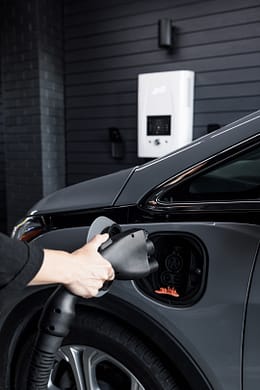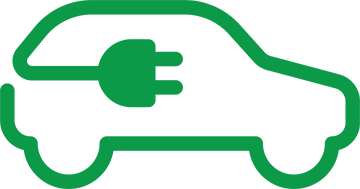
How do they keep water, dust, mud and other horrors out of your car and charger?
Driving anywhere at anytime means you’re going to encounter things your car will be sensitive to, or if insufficiently protected, can pose a threat to its basic functioning… Things like water, dust, mud, and experience the effects of temperature, radiation and EMF.
This is why electronics must be enclosed to protect function and ensure efficient fit-for-purpose use and longevity. The Ingress Protection or IP rating is a certification instrument that can quantify disruptions to proper function and contaminants. IP is an international measure as specified by the International Electrotechnical Commission (IEC) in IEC 60529.
IP Rating Defined
The numbers that comprise the IP rating awarded to a device indicate its capacity to resist dust and water contaminants. These ratings are determined by what the device can resist and also for how long it can resist it.
IP ratings are always prefaced by the letters ‘IP” which are then followed by two digits and maybe followed by an additional letter. For example, IP67 or IP69K.
IP Ratings pertain to solids and liquids; contaminants that most commonly inhibit or destroy electronics.
The problem with mud and dust
Mud and dust are solids which can accumulate on surfaces. When it comes to electronics, they can form insulative layers, cause the part or entire device to overheat, and malfunction in some way. Other types of solids are encountered when driving. Bugs, sand, and dirt are all types of debris that affect the vehicle.
The problem with liquids
Water is a conductor. Electricity and water do not mix because water can create short circuits which either damage the electronics temporarily and even permanently. That damage may either be isolated to a portion of the system, or it could affect the entire device. Many different liquids including varying levels of moisture from water or other liquids and chemicals, can all interfere with electronics.
How Does the IP System Work?
There are many different potential risks from ingress of moisture/fluid and particles (inanimate and animate) from which an EV needs to be protected. The higher the IP rating the more impervious it is to those things. The highest rating is IP69K which is often required in automotive applications.
The first digit (in this case the 6) indicates the rating against the ingress of solids, and the second digit is its ability to deflect liquids.

Ratings in Vehicles
Electric cars are not classified with a single IP rating. Instead, different components carry different ratings depending on their use. As the external of the car may very well become temporarily submerged everything exterior to the cabin needs a higher rating than say devices inside the car, such as switches, radios, screens, speakers and so on. Certain systems are considered critical (wiring harnesses in and around the engine) and require a standard minimum rate of IP65, and above.
Here are the lists of definitions of the first and second digits of the IP system.
It’s worth knowing that engineers often overshoot the desired rating (the rating required by law for the rating) so that best operation and optimum compliance is ensured. This accomplishes two things: a better, more attractive and durable item is produced, and it the manufacturer can boast better IP rating.
Solids Ingress Protection Rating Scale as per IEC 60529
First digit of IP rating | Level of exclusion |
1 | Solids greater than 50mm with a force of up to 50N (Newtons) |
2 | Solids greater than 12.5mm, force up to 10N |
3 | Greater than 2.5mm, force up to 3N |
4 | Greater than 1mm, force up to 1N |
5 | Dust protected. Warrants that dust will not interfere with operation from 2 – 8 hours. |
6 | Dust-tight. Warrants no ingress of dust from 2 – 8 hours. |
Liquids Ingress Protection Rating Scale as per IEC 60529
Second digit of IP rating | Level of exclusion |
1 | No harm caused by drops that fall vertically |
2 | No harm by vertical drops, with enclosure tilted up to 15 degrees from vertical |
3 | As above, with enclosure tilted up to 60 degrees |
4 | Protected from liquid splashed from all directions. 4K. The K indicated increased pressure, with liquid from all directions. |
5 | Protection against low-pressure jets of water. |
6 | Protection against powerful jets, against the item, from any direction. 6K. As above but with increased pressure. |
7 | Protection from temporary submersion (standard pressure and time) |
8 | Protection from permanent submersion with no harmful effects |
9 | Protection from liquid, high pressure from close range, with high temperatures, from any direction. No harmful effects. 9K. As above and including high pressure and high temperatures, from any directions with no resultant harmful effects. Such as steam cleaning. |

